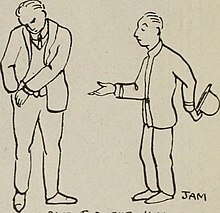
Line art or line drawing is any image that consists of distinct straight lines or curved lines placed against a background (usually plain). Two-dimensional or three-dimensional objects are often represented through shade (darkness) or hue (color). Line art can use lines of different colors, although line art is usually monochromatic.
Techniques

Line art emphasizes form and drawings, of several (few) constant widths (as in technical illustrations), or of freely varying widths (as in brush work or engraving). Line art may tend towards realism (as in much of Gustave Doré's work), or it may be a caricature, cartoon, ideograph, or glyph.
Form
One of the most fundamental elements of art is the line. An important feature of a line is that it indicates the edge of a two-dimensional (flat) shape or a three-dimensional form. A shape can be indicated by means of an outline, and a three-dimensional form can be indicated by contour lines.
History
Before the development of photography and of halftones, line art was the standard format for illustrations to be used in print publications, using black ink on white paper. Using either stippling or hatching, shades of gray could also be simulated.
Image gallery
-
 Stippling
Stippling
-
 Detail of hatching
Detail of hatching
-
 Linlithgow Palace
Linlithgow Palace
-
 Line art peacock
Line art peacock
-
 Detail of Melencolia I by Albrecht Dürer
Detail of Melencolia I by Albrecht Dürer
-
 Self-portrait by Rembrandt
Self-portrait by Rembrandt
-
 Bank note detail
Bank note detail
See also

- Lineography
- Old master print
- Screentone
- Hatching
- Stippling
- Halftone
- Ben-Day dots
- Perspective (graphical)
- Vanishing point
References
- Sayre, Henry M. (2010). A World of Art. Upper Saddle River, NJ: Prentice Hall. pp. 56–57. ISBN 978-0-205-88757-6.
External links
![]() Media related to Line art at Wikimedia Commons
Media related to Line art at Wikimedia Commons
| Animation topics | |||||||||||||||||
|---|---|---|---|---|---|---|---|---|---|---|---|---|---|---|---|---|---|
| By country |
| ||||||||||||||||
| Industry | |||||||||||||||||
| Works | |||||||||||||||||
| Techniques |
| ||||||||||||||||
| Variants | |||||||||||||||||
| Related topics | |||||||||||||||||
| Visual arts | |
|---|---|